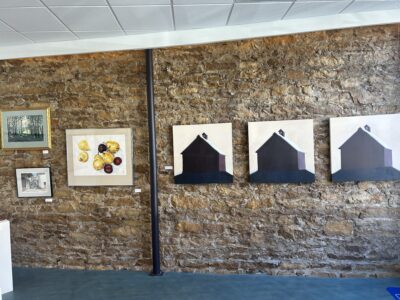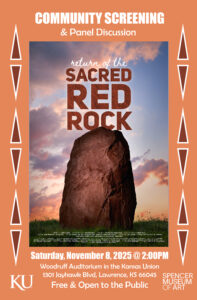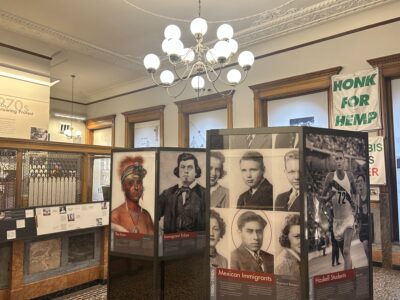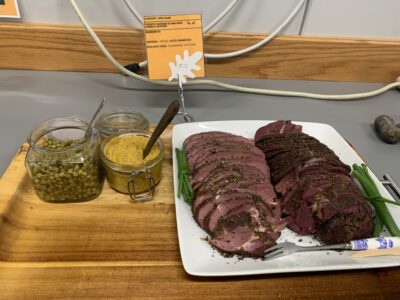Organ grinder
Former KU basketball player Mike Finnigan still responds to siren call of the music world
Mike Finnigan was a 19-year-old student at Kansas University when he became the proud owner of a Hammond B3 organ.
“I put it in the kitchen of this apartment I lived at with this guy. He wasn’t that happy about it. It’s a little large for a college apartment,” Finnigan recalls.
The Ohio native was lured to KU in 1963 with a basketball scholarship. But the Jayhawk sports lifestyle gave way to the town’s other great drawing card: music.
“I don’t know if there was a specific moment when I (chose music over basketball). I think it was more just a gradual drift. It became kind of all-consuming. I don’t think anybody in the athletic department was real disappointed by my decision,” he says.
While no one will be retiring his basketball jersey anytime soon, Finnigan is a perennial all-star in the recording world. Although extolled for his gutsy singing, Finnigan is the undisputed master of the distinctive B3, which has turned him into one of the most in-demand session players.
“I think there’s some kind of soul muscle-memory triggered when it’s heard,” he says of the B3. “People who don’t know what it is know it when they hear it.”
Lawrence musician Kelley Hunt says, “There are a lot of great B3 players out there, but there’s really nobody who’s quite as muscled up and as much of a showman as Mike.”

Mike Finnigan demonstrates his prowess on the Hammond B3 organ during a recent Blues Cruise performance. At right are a selection of some of the high-profile albums on which Finnigan has appeared.
Hunt first saw Finnigan play in 1974 when she was underage and had to sneak into Wichita’s Cotillion. Decades later, Finnigan ended up producing her first album and performing on her second.
Although Hunt is well-versed in R&B piano, she steers clear of tackling the B3.
“B3 is a completely different animal,” she says. “You’ve got two keyboards going, and your feet. And you’ve got all the different drawbars to get the different sounds. Plus, you control a Leslie (speaker) behind you. It’s like patting your head and rubbing your stomach. But it’s second nature to (Finnigan). He can just flat-out play it like nobody else.”
Session man
Based in the Los Angeles area for years, Finnigan is rarely without a steady gig.
Sometimes that takes the form of his own act, like his current Grammy-winning ensemble The Phantom Blues Band. (“It’s just like having a conversation with an old friend because they are old friends. We’ve all known each other for over 20 years, and in most cases longer,” he says.)
Mike Finnigan’s five indispensable R&B albums
¢ James Brown: “Live At the Apollo”
¢ Ray Charles: “The Best of Ray Charles: the Atlantic Years”
¢ Aretha Franklin: “I Never Loved a Man”
¢ Etta James: “At Last”
¢ B.B. King: “Live At the Regal”
“Naturally, I feel the list isn’t quite right. Where is Muddy Waters, Howlin’ Wolf, Freddie King, Otis Redding, Bobby Bland, Fats Domino, Little Richard, Wilson Pickett, Marvin Gaye, Stevie Wonder and so many others which have had such a powerful effect on me over the years? What about undeniably great artists like Donnie Hathaway, The Staples Singers, Stevie Ray Vaughan? You see my problem. I guess it just came down to the R&B albums I’d absolutely have to have if I had only five.”
But more often than not, it’s as a gun for hire, contributing to high-profile albums or commercial product jingles.
“I’ve sung every soft drink: Coke and Pepsi. Coors, Miller and Bud. I’ve sung Cadillac, Toyota, Dodge trucks. I’ve sung Wrigley’s gum and all kind of food products. I’ve sung Taco Bell,” he lists.
This month finds him working in the studio on Joe Cocker’s new album – just one in a staggering catalog of collaborations:
¢ Blues greats Buddy Guy and Etta James.
¢ Pop stars Peter Frampton, Rod Stewart and Maria Muldaur.
¢ Hard rockers Jane’s Addiction and hair metal goons Poison.
¢ Underground hipsters The Mooney Suzuki.
¢ Actors-turned-singers Billy Bob Thornton and Andy Griffith.
¢ Alice Cooper. Tracy Chapman. Los Lonely Boys. Ringo Starr. Not to mention the years of touring he logged with Crosby, Stills and Nash.
Yet there is one early session that still elicits the most adulation.
In 1968, Finnigan appeared on Jimi Hendrix’s classic “Electric Ladyland,” contributing organ to the tracks “Rainy Day, Dream Away” and “Still Raining, Still Dreaming.”
“People who aren’t familiar with me, that might be the first thing they want to talk about,” he confesses.
He cites a recent session recording with Sam Moore (of Sam & Dave fame) in which he walked into a room of hotshot young players. (“It’s kind of disquieting to be the oldest guy on the session, but it happens a lot,” he says.)
A twentysomething black guitarist in the studio had a complete attitude change toward Finnigan once the “Ladyland” connection was made.
“He was in total awe because I played with Jimi Hendrix,” Finnigan says. “That’s all he needed to know. I was like a made man.”
Good reasons
Not every studio gig or guest appearance is quite so memorable.
“If you’re a hired gun, you never know what it’s going to be,” the 61-year-old musician says.
“There have been a multitude of occasions where I’ve sat in the room thinking, ‘Are you sure this is the song you want to do? I really can’t see any good reason for it.'”
Listen to the music
Of all the sessions logged, he cites one with West Coast rap crew Boo-Yaa T.R.I.B.E. as the most peculiar.
He says, “I was working with Etta James on another project in the studio, and somebody who was with her label told them to call me. I wound up going down to the studio to overdub some Hammond organ on some stuff. What made it bizarre was that in the studio they had a bunch of free-weight benches. These guys were all huge, and they were all in there pushin’ iron when I was recording.”
It reminds Finnigan of the advice his father gave after the shock of learning his son was giving up a KU basketball scholarship to try his hand at music.
“My dad said, ‘Just remember: Even if you’re doing something you love, you’re not always gonna like it.'”







